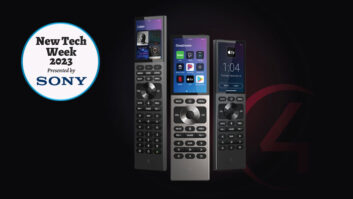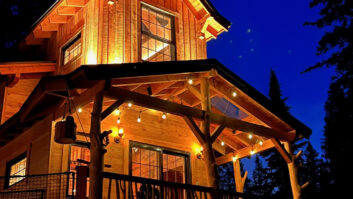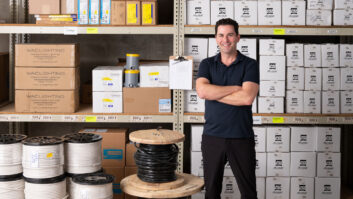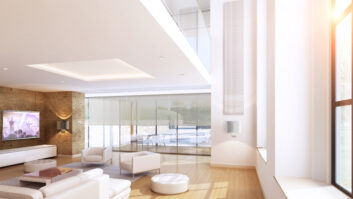Like Rodney Dangerfield, lighting control systems get no respect. At least, thats the opinion of Gary Meshberg, chairman of the Home Lighting Control Alliance. But thats beginning to change, as highlighted by the results of the 5th Annual State of the Builder Technology Market Study produced by the Consumer Electronics Association, in which automated lighting control enjoyed the highest year-over-year growth of any home technology in terms of the percentage of builders offering the technology to their clients.
Meshbergs frustration is fueled every time he picks up a trade magazine or walks a trade show floor. The publications and exhibit booths are crammed with sexy audio/video gear, but theres scant presence of lighting controls, he said. Yet, he noted, if you peruse the featured Home of the Month, or other showcase installations, its obvious that every such dream installation includes top-of-the-line lighting controls.
In other words, todays luxury home just isnt complete without lighting controls, yet lighting doesnt seem to get the attention that it is dueeven within the industry. To rectify this situation, a number of manufacturers and a few of the larger integrators banded together last fall and organized the HLCA to jointly promote the automated lighting control category. The HLCA currently has about 25 members.
While the custom installation industry as a whole may not be paying enough attention, Meshberg opines that savvy integrators who are wise to lighting controls potential will have a relatively clear field in a small but growing niche. Eric Borgstrom, owner of Opus Lighting, in New Haven, Connecticut, is one such integrator. Four years ago, he spun the lighting controls business out of the integration firm in which he was a partner, and lighting is now all that he does (see sidebar, Tightly Focused.)
Phil Scheetz, home systems marketing manager for Lutron, is seeing lighting control gaining new respect and awareness, and notes that the adoption rate among builders is rising as they begin to see its value and growing appeal. Lighting control is something that both men and women care about, Scheetz said. Theres a safety and security aspect to it that the customer really feels good about.
Going Retro
As the new-home construction market tightens, integrators may want to consider the relatively untapped retrofit market for lighting controls. Lutron, Crestron, and many other lighting control vendors offer radio-frequency (RF)-based solutions for this market. Lutron actually offers three separate RF-based product lines, with the newest entryAuroRa positioned as an entry-level solution. The AuroRa wireless package is marketed to builders (as well as the general market) as a simple way to add lighting control to their homes, with the newest package offering security features to the mix.
Lutrons step-up RF solution is RadioRa, followed by the RF version of the top-of-the-line HomeWorks product (known as HomeServe), which has been enhanced with RF diagnostics. The radio in HomeWorks Wireless can now give us back the signal strength of the device, Scheetz said. It allows us to troubleshoot and place repeaters more effectively, so it reduces the installation time.
Scheetz said that having three different levels of systems means that we can really target the product to where the builder and the installer is oriented.
Intermatics InTouch system is another entry-level wireless (via Z-wave), retrofitable lighting control option. The patent-pending InTouch server provides full two-way, real-time status of every device in the network, including legacy Z-wave devices. Additionally, it is designed to provide greater network range, in-field firmware upgrade capability, system text and graphics messaging, as well as centralized scene and status information.
The Intermatic InTouch system gives installers the ability to integrate an InTouch system using existing wiring, said Jeff Bovee, commercial marketing manager for Intermatic Inc. InTouch is ideally suited for both new construction and retrofit applications. Additionally, installers can earn back lost sales by offering a full-bodied system that is more reliable and affordable than current hard-wired systems.
Distributed Control
Square D, a Schneider Electric company, about a year ago launched its Clipsal lighting controls product line in the U.S. Brad Wills, director of installation systems and control for Square D Clipsal, said that what sets this new offering apart from most of the pack is its distributed architecture. While most lighting controls employ a central control processor, he points out that the intelligence in a Square D Clipsal system is embedded in the keypads and load modules that make up the system. The system is inherently scalable, Wills said. As you add keypads, youre adding processing power.
Wills noted that the oft-used central processor represents a single point of failureone that distributed systems dont have: If that controller goes down, the whole system goes down. By contrast one down keypad in the Clipsal system will not draw down the entire system.
Like Square-D, Colorado vNet uses a distributed architecture for its controls system and cites the same main advantages: reliability and scalability. Ben Beierwaltes, marketing director for Colorado vNet, notes that the system can scale from one keypad or touchpad and one dimming module, up to 8,000 modules.
Were the first in the industry to offer a floorplan-based programming environment, Beierwaltes said, where you can drag and drop the loads onto the floor plan exactly where they are going to be, drag and drop the keypads on, program them, and then go into a simulator mode, so that when you hit the button, you can see the lights turning on and off, in real time, to check and validate all of your programming. You dont have to be out on site to make sure youve got everything correct.
Vantage Controls is one well-established lighting controls vendor thats now moving to offer a broader platform of home technologies. Last year, we released our latest controller, the InFusion controller, said Peter Taylor, VP of engineering for Vantage. It uses all of the same dimmers and keypads [as Vantages previous controller], but it upgrades the system.
In developing the InFusion controller and its related configuration/programming software, Design Center, the company created it so that dealers can spend less time commissioning, programming, and designing a system and more time selling the systems. The focus is on a drag-and-drop configuration style that eliminates the need for a dealer to hire a touch-screen programmer to do the programming.
Vantage offers both wired and wireless connection options that can be mixed and matched. We have one system with three incarnations, Taylor said. We have a centralized system that has centralized dimmers with low-voltage keypads throughout the house. We also have wired wall-box dimmers that you can connect to our system. And we have wireless wall-box dimmers.
In considering how the lighting controls segment has evolved over the years, Bill Schafer, director of product and channel development at Crestron, said that projects have gotten more complex. We definitely have more load types today than we used to, he explained. We have electronic low-voltage and the introduction of commercial lighting fixtures, such has HID fixtures, into residential installations. That, I think, has produced a change in how people think of residential lighting.
Schafer also points to an evolution in wireless control links, noting that mesh networking is far superior to older technologies as it is more robust, stable, and offers more possibilities to add installations.
Total Control
Perhaps it has to do with Audio Advisors South Florida location, where bountiful natural sunlight streams in from every windowand you have to do something about that. What I see [as a trend] is total lighting control, said Larry Bem, lighting designer for the firm. We really want to control all of the light. This includes natural light as well as the artificial variety. Audio Advisors is a Lutron shop (with Crestron as their go-to vendor for AV control), because the manufacturer offers both shade control and control of interior lighting. Bem likes Lutrons programming model for shade control, which is the same as for the lights (want the shade half-way down? Just dim it to 50 percent).
Critical Controls
In selecting a lighting control system, performance and reliability are absolutely key. While clients may scream if their audio or video system quits, losing all the lights in the house is a whole different story.
Other considerations that place high on integrators Borgstrom and Bems lists: The user interface and the vendors technical support and customer service. The former is a hot-button issue for Bem. Its the customers perception of how fun the system is to use, he said. Its what they use to turn the lights on and off.
Alan R. Frank ([email protected]) is a networking consultant and freelance writer covering the fields of communications, networking, and digital entertainment.







